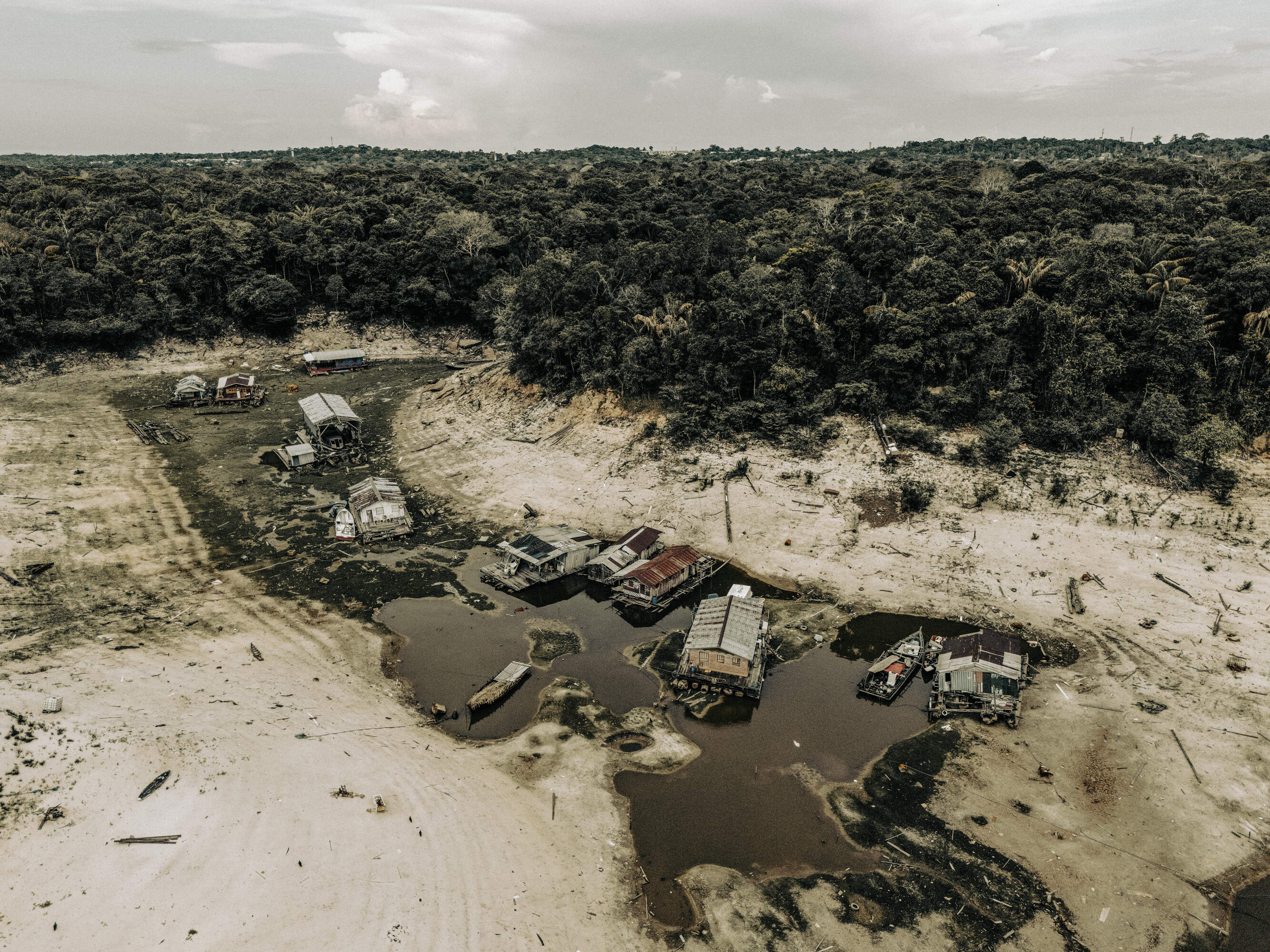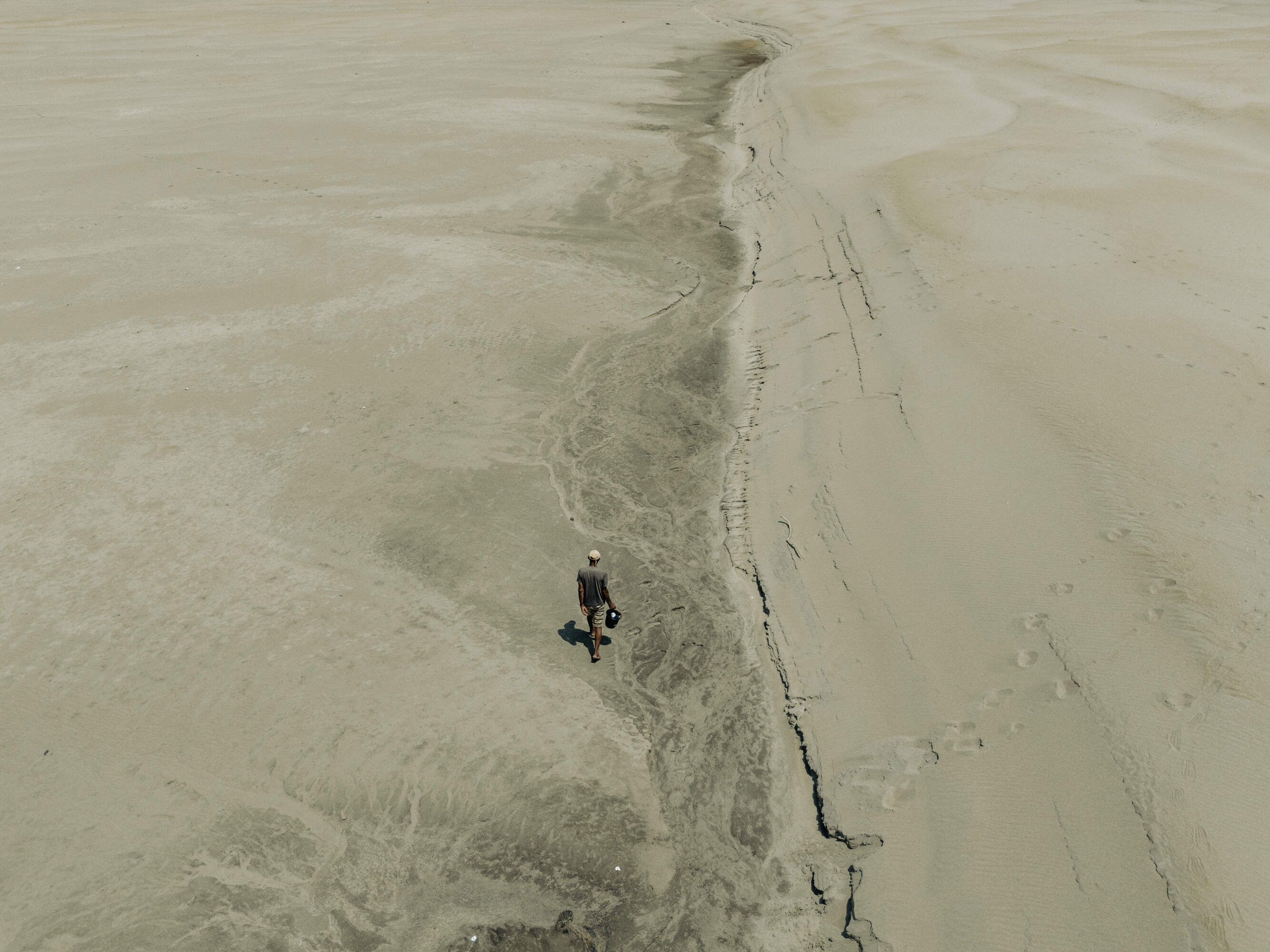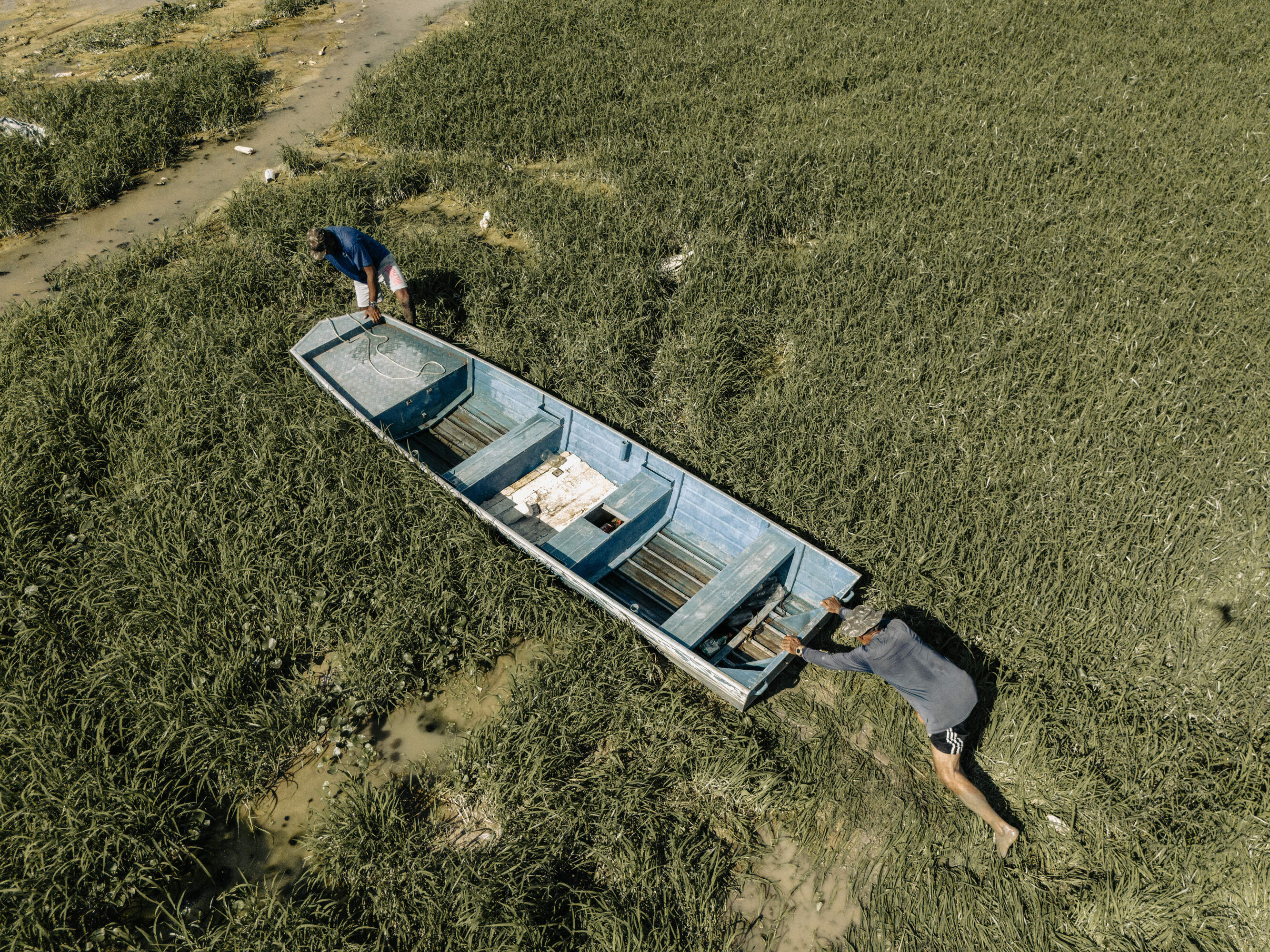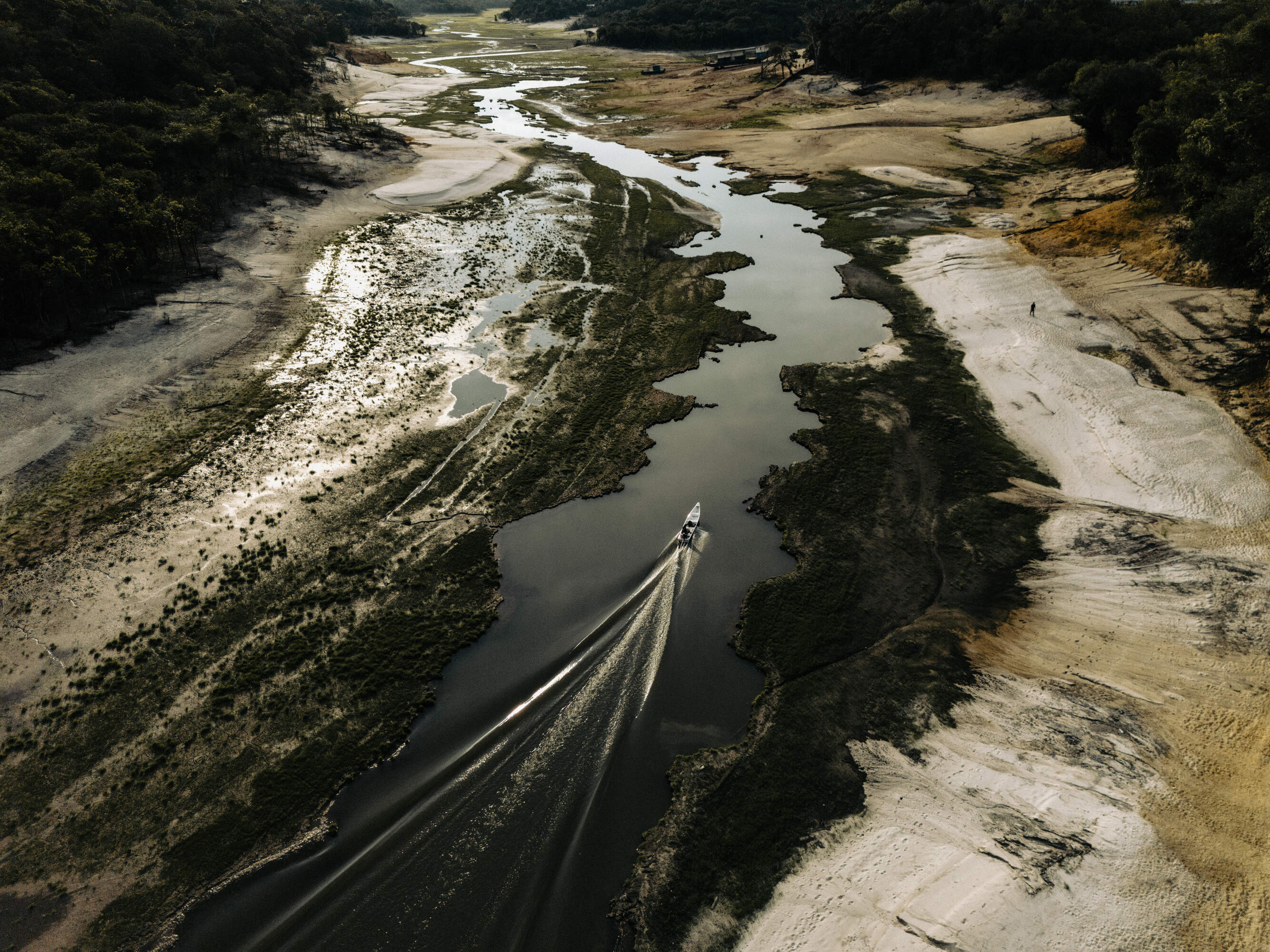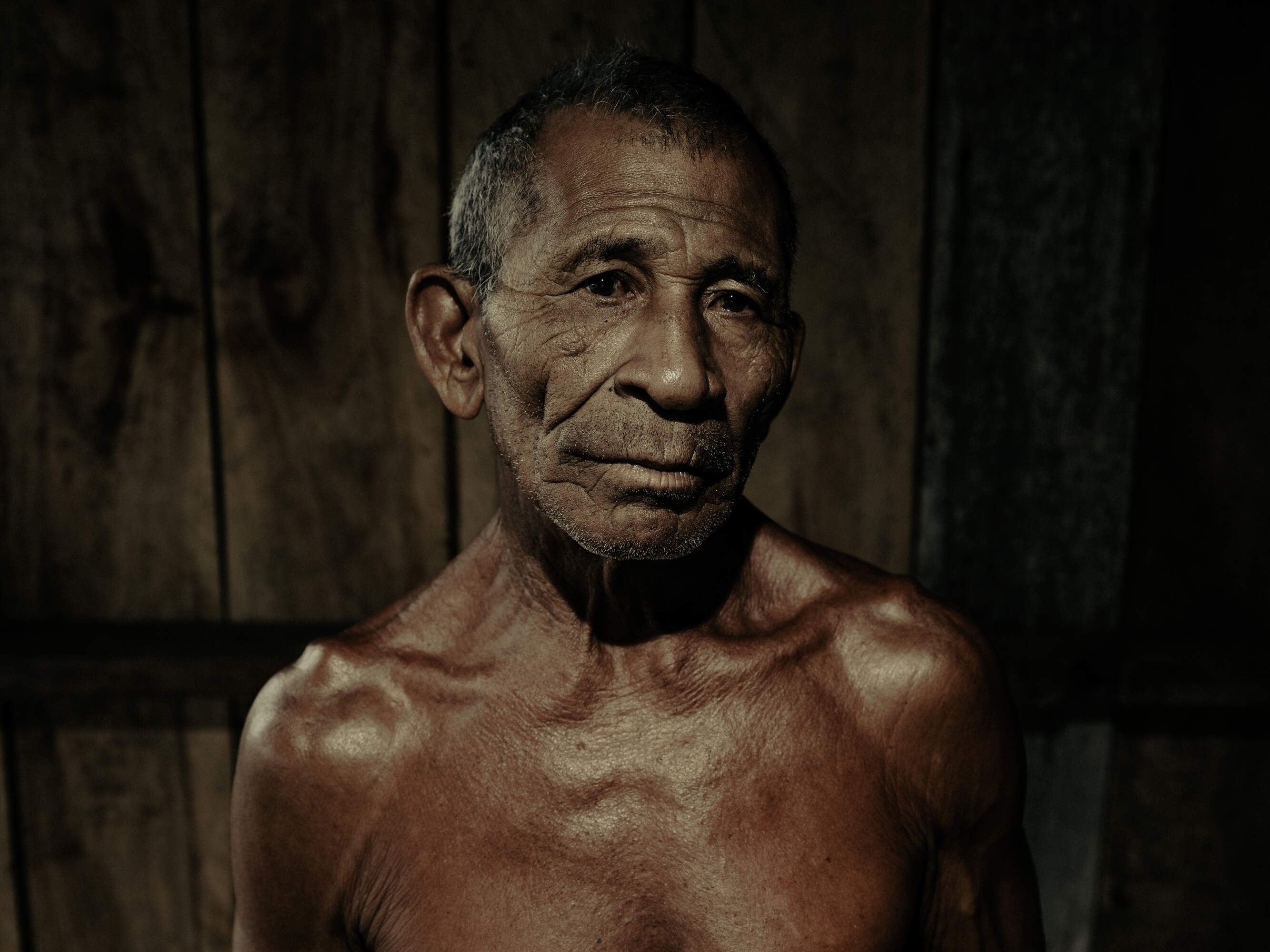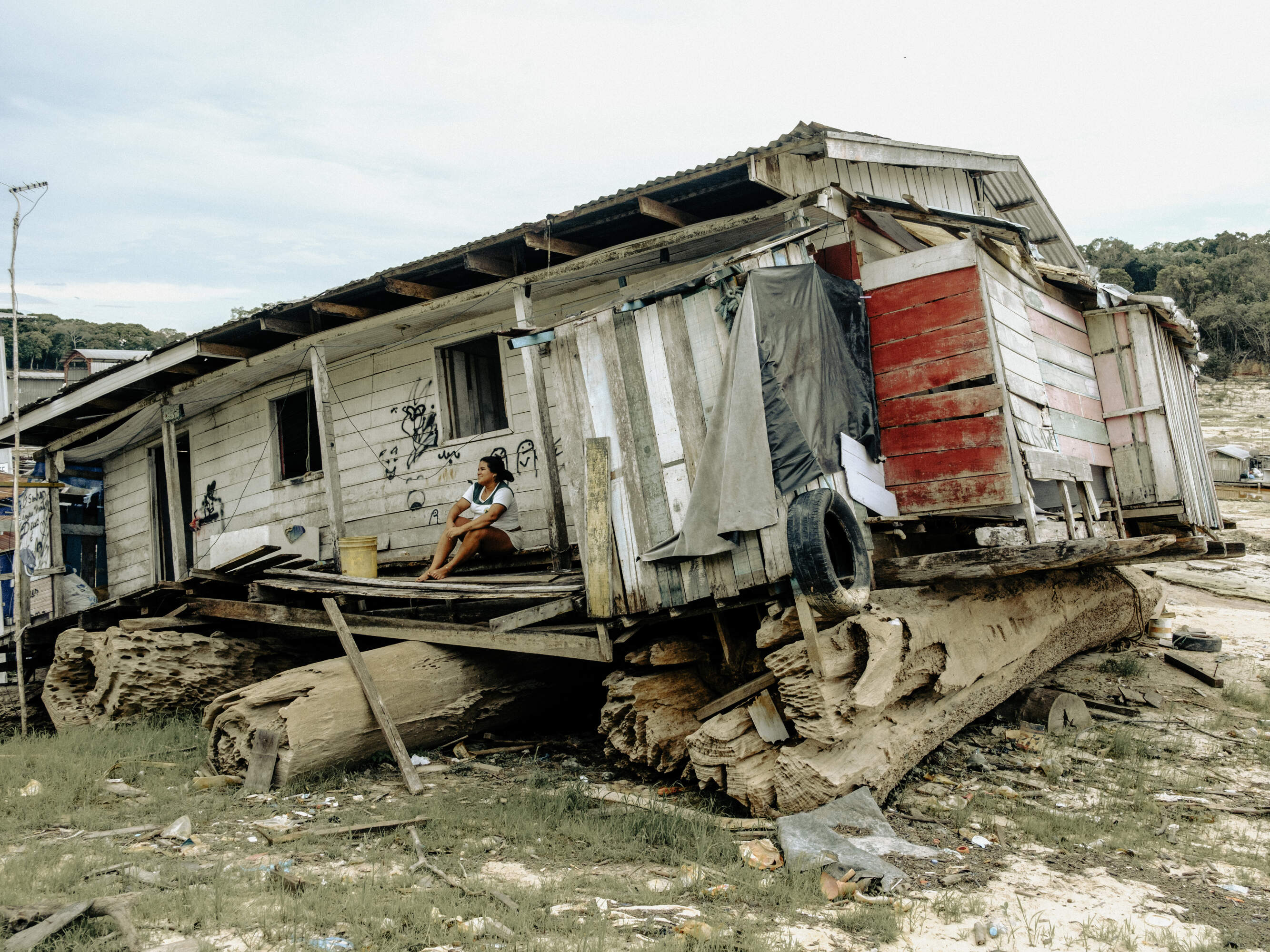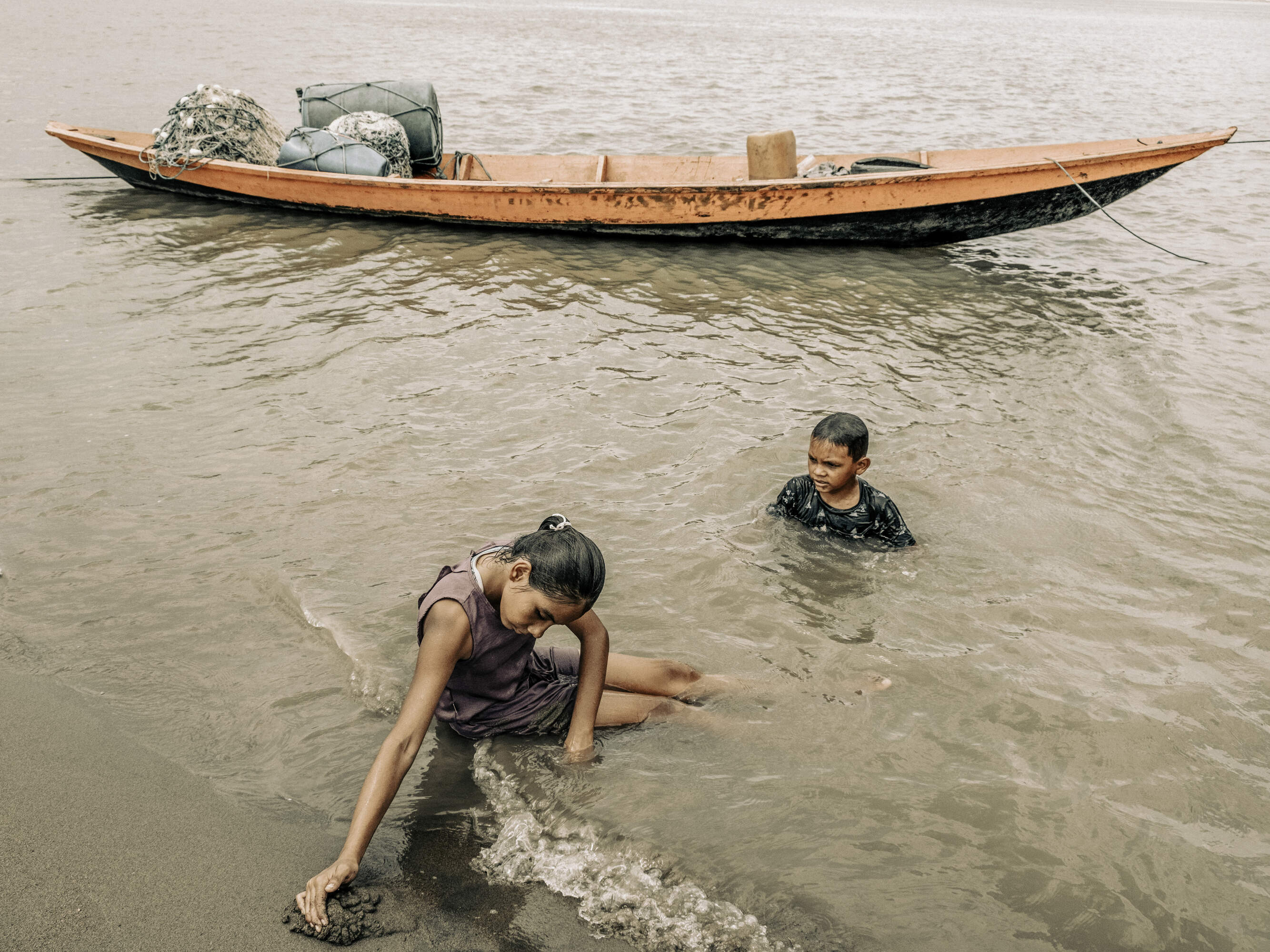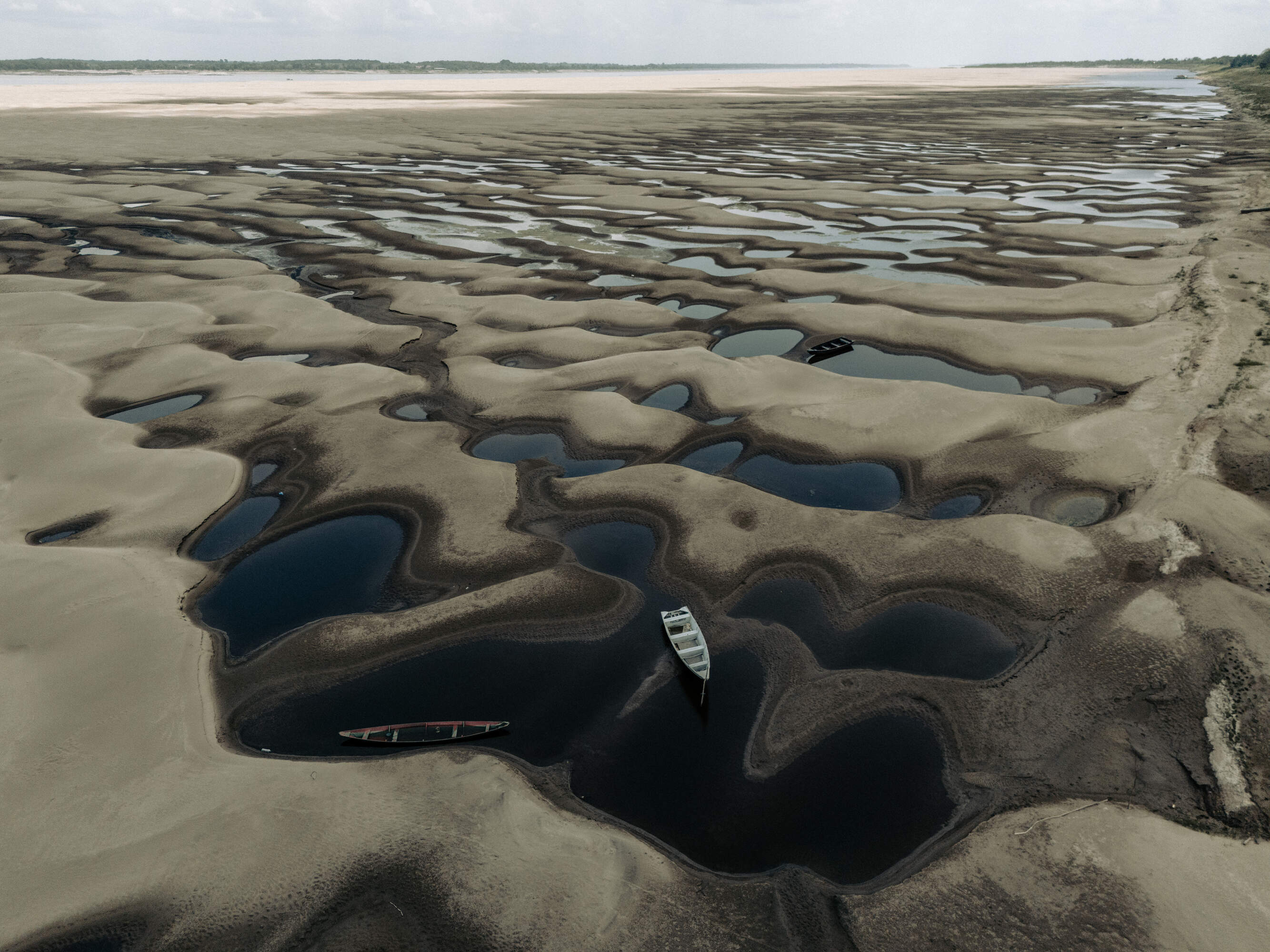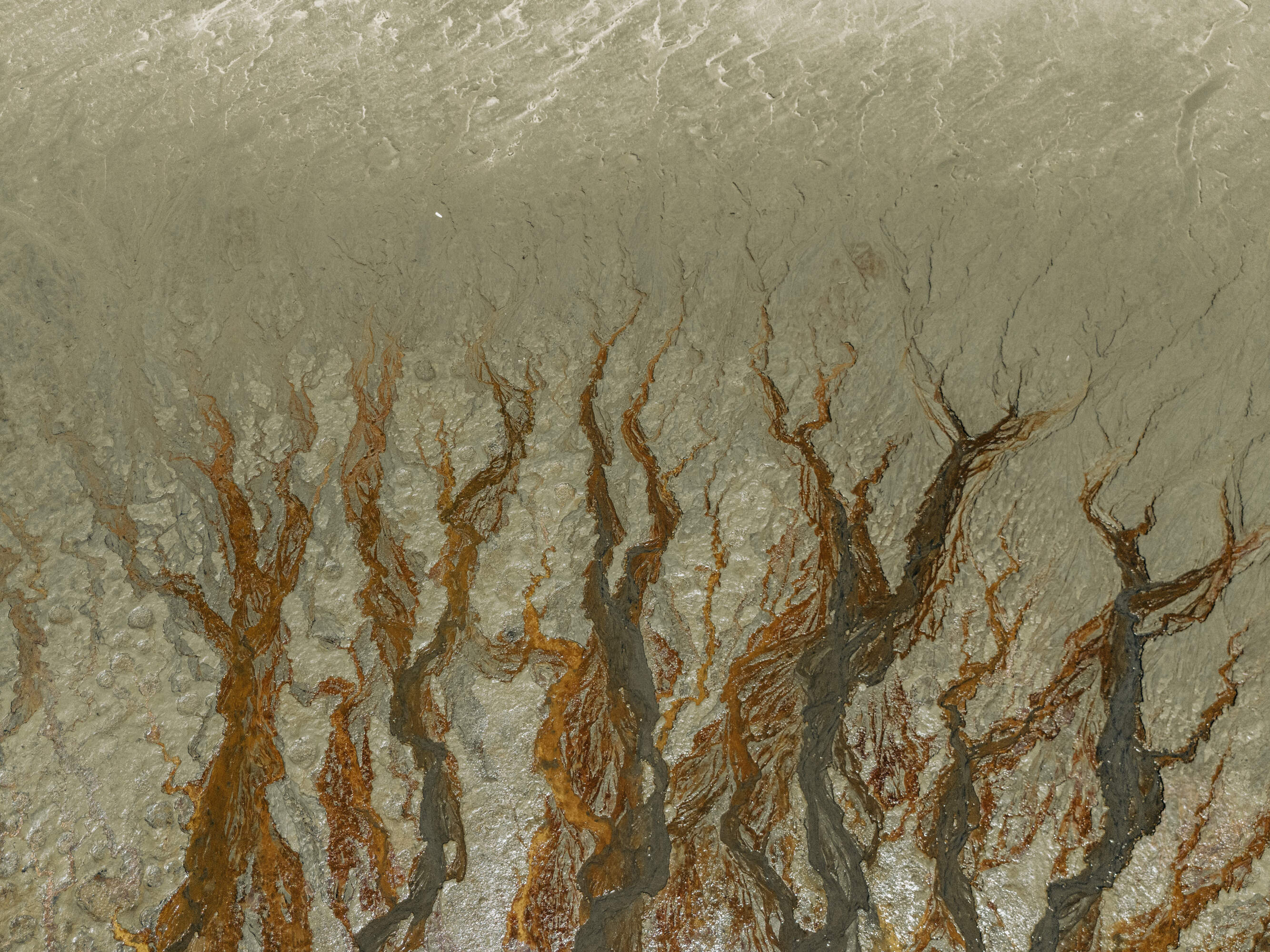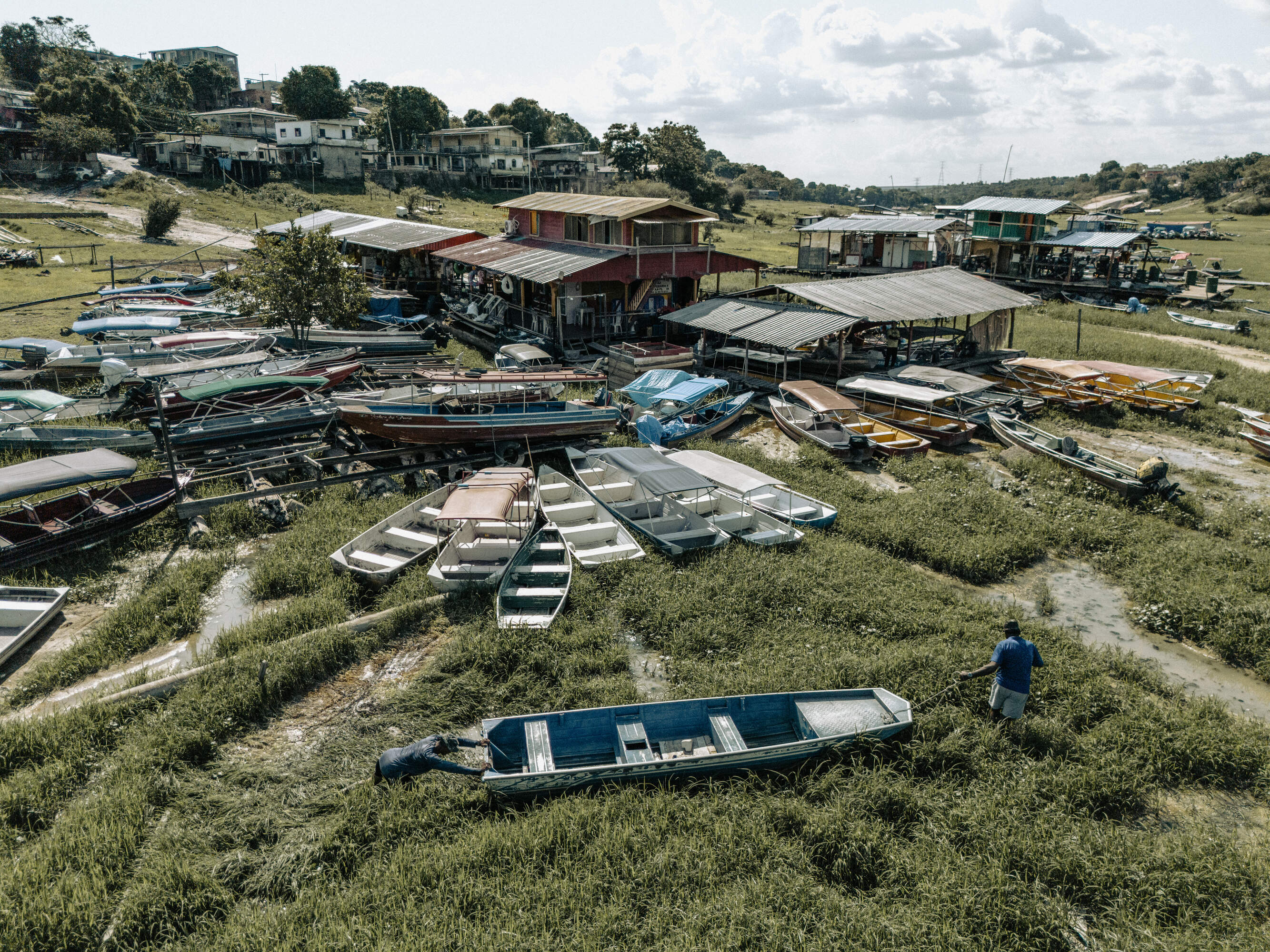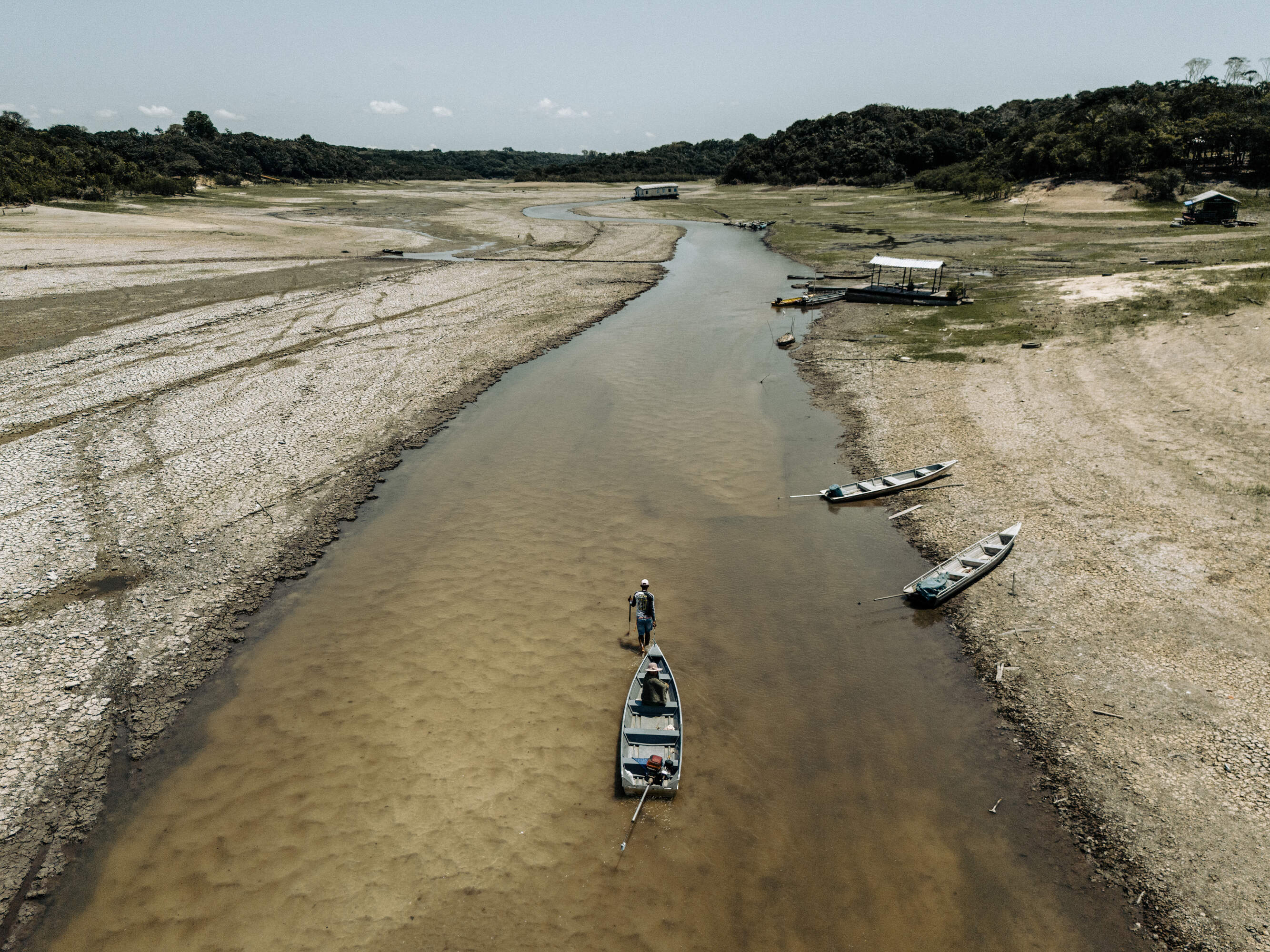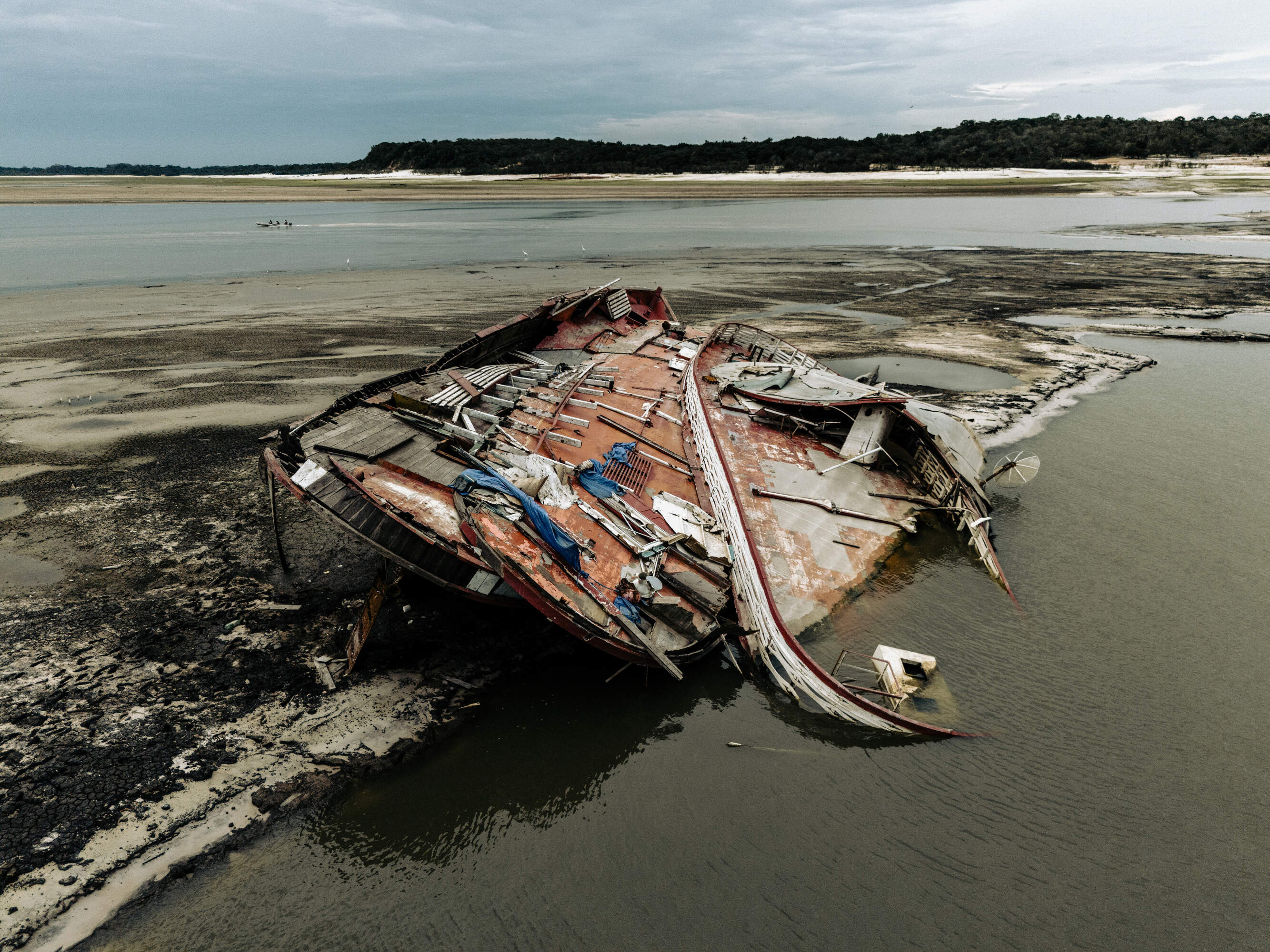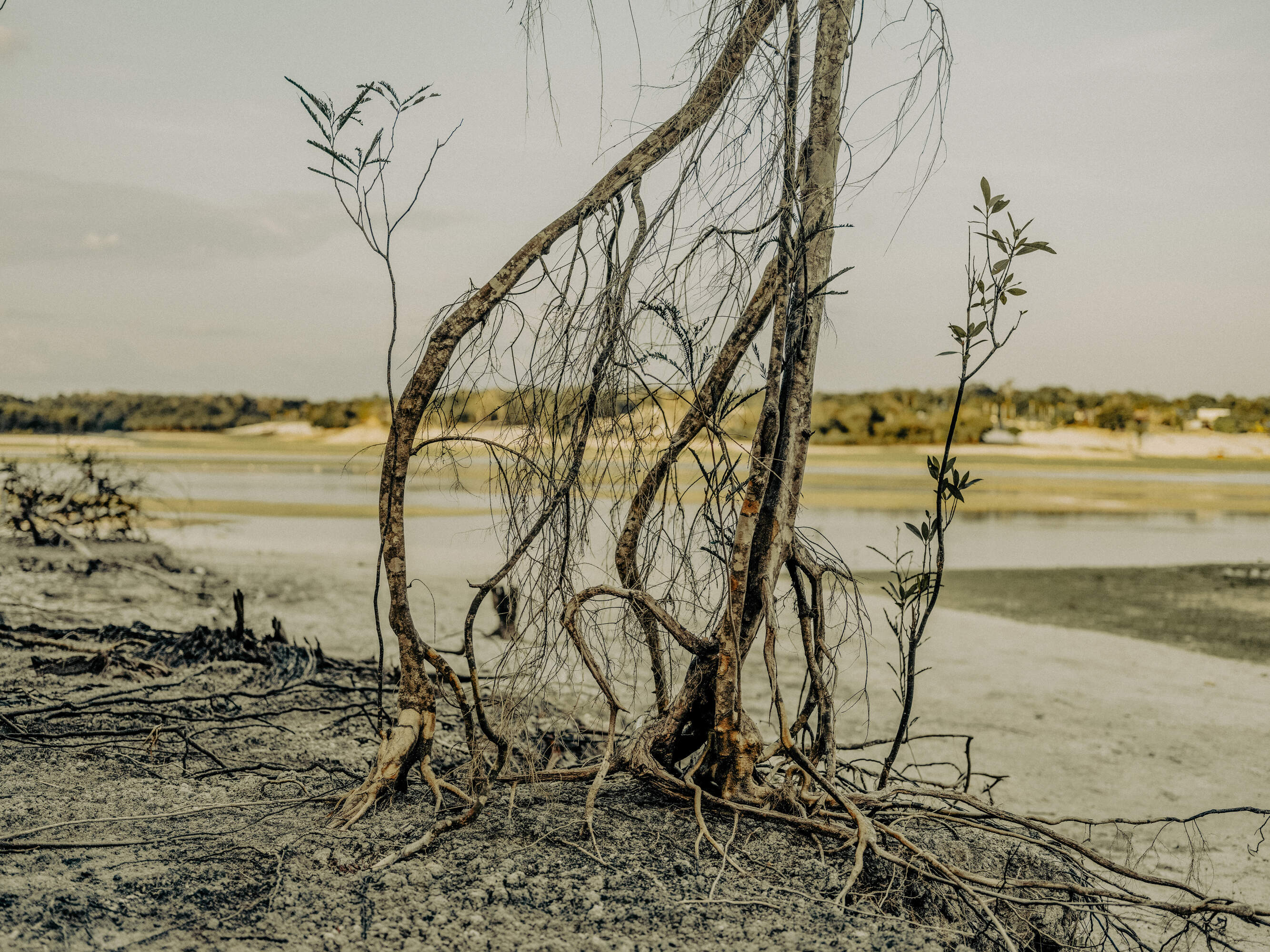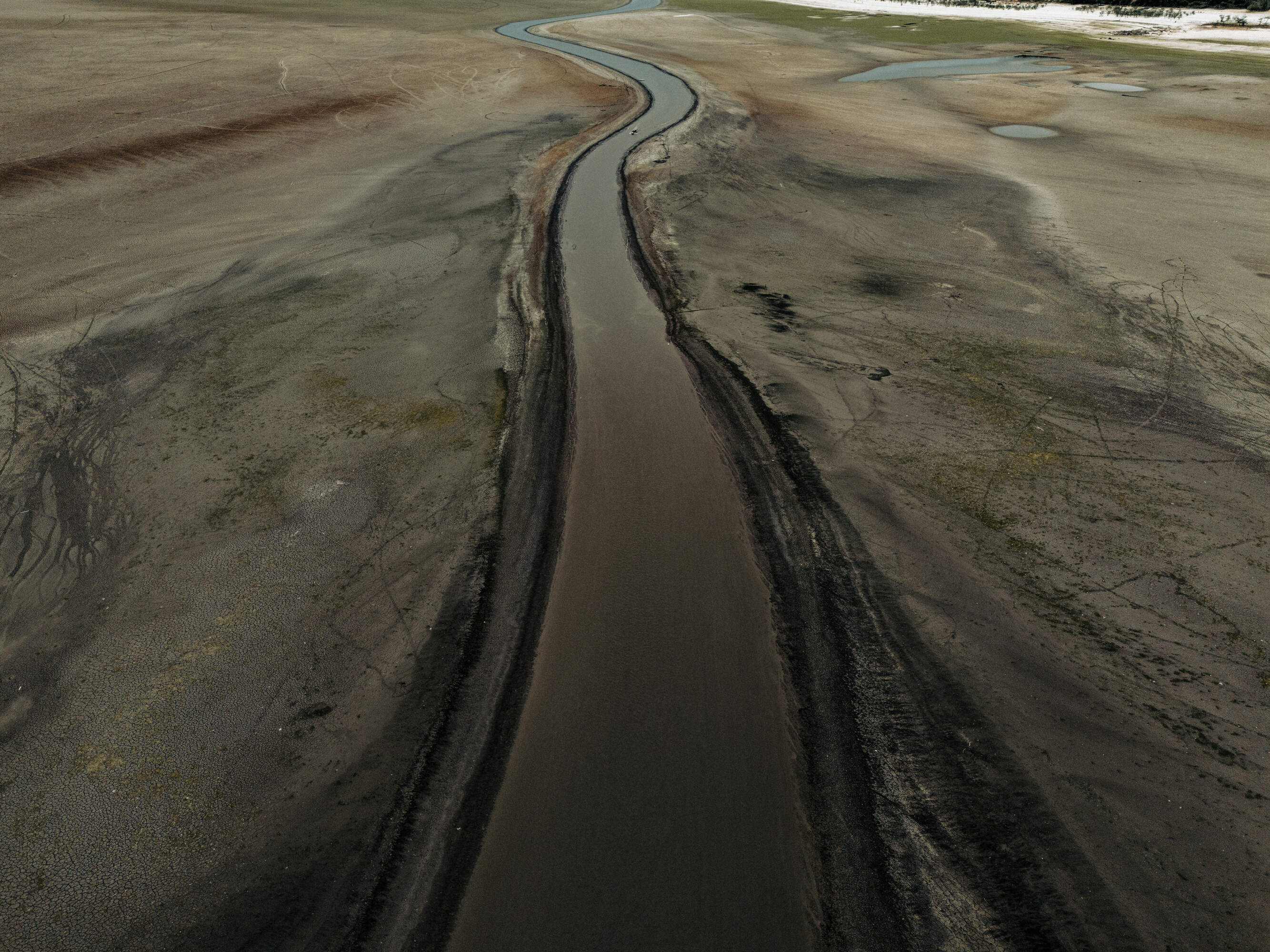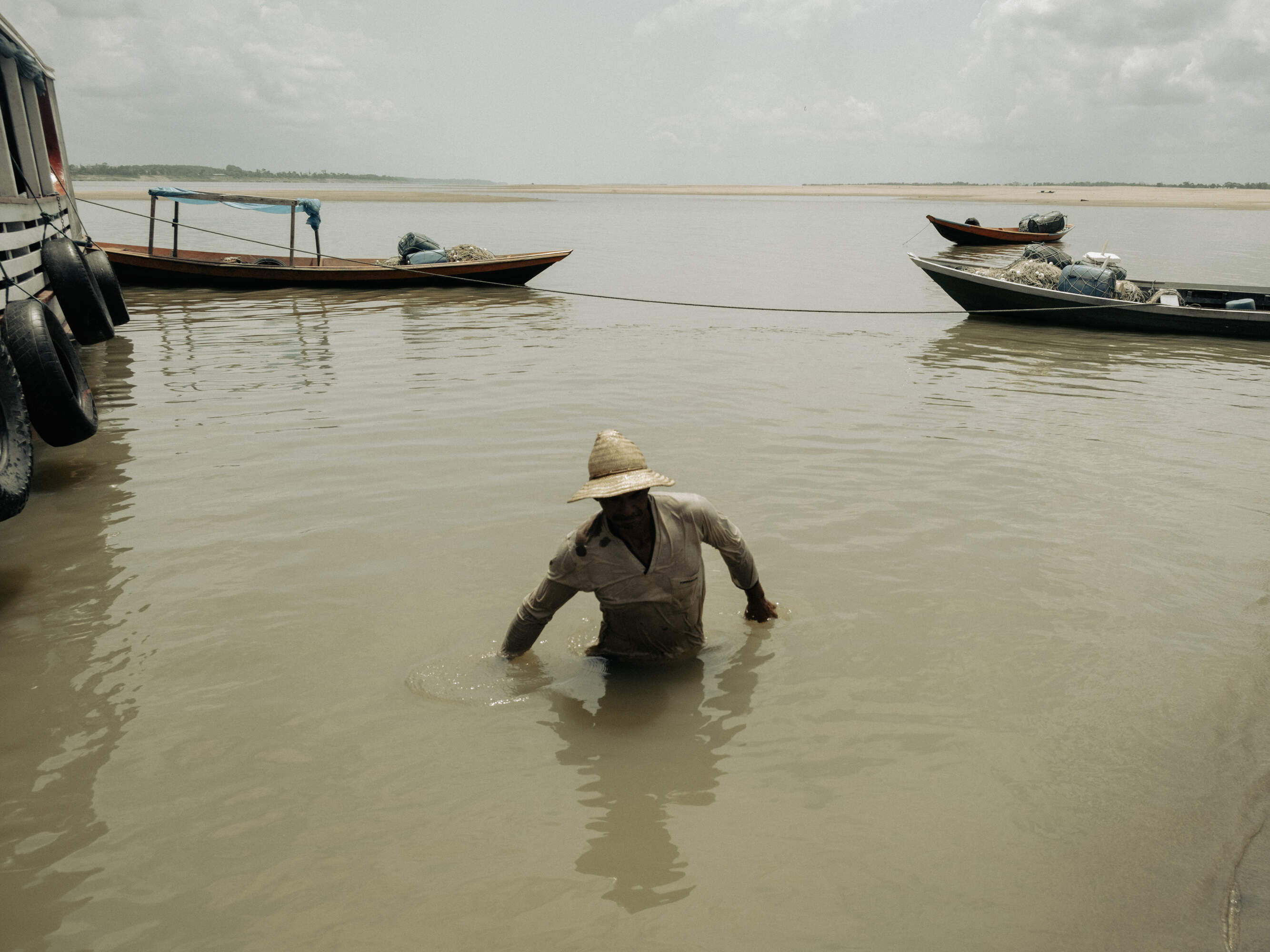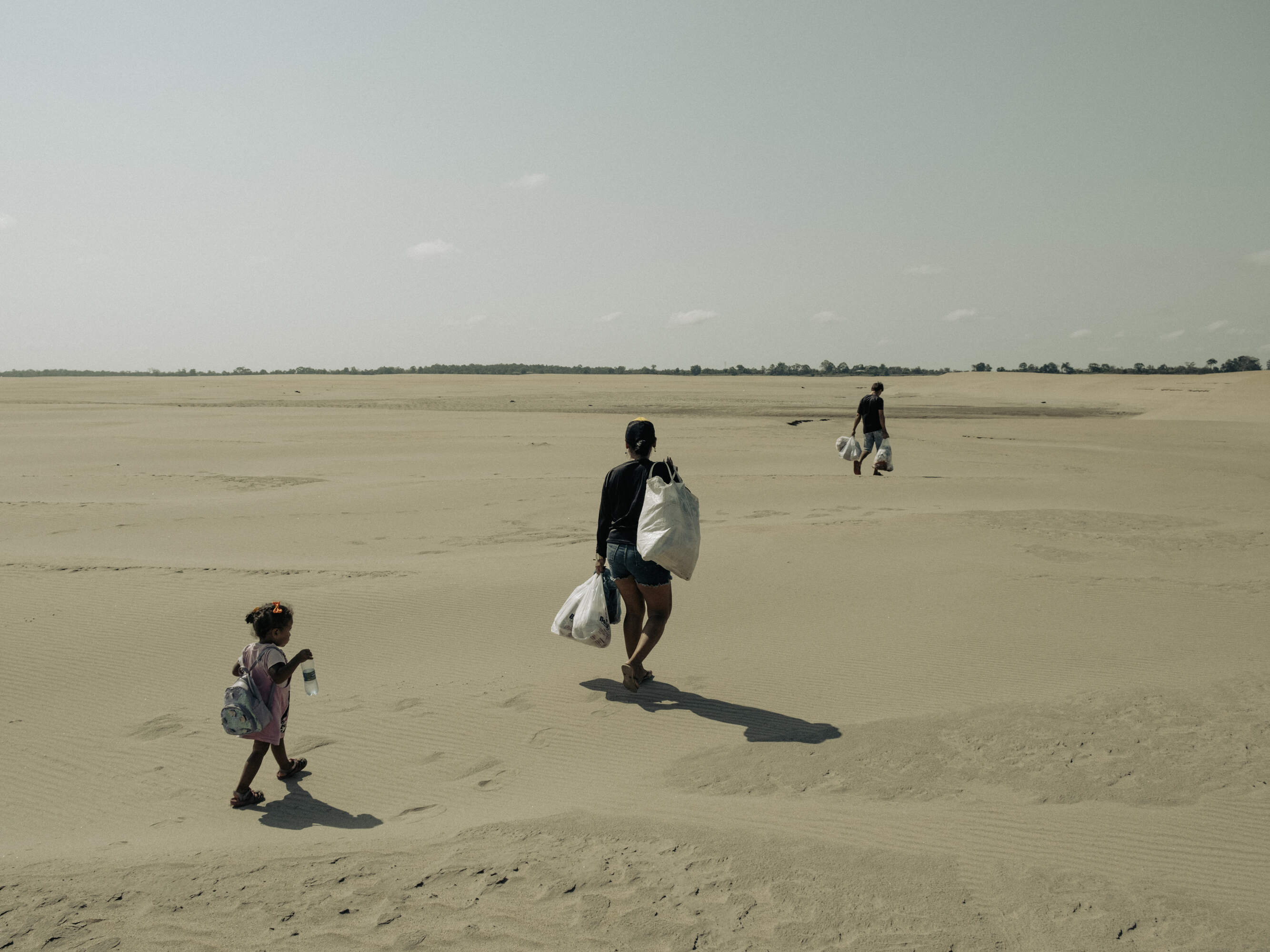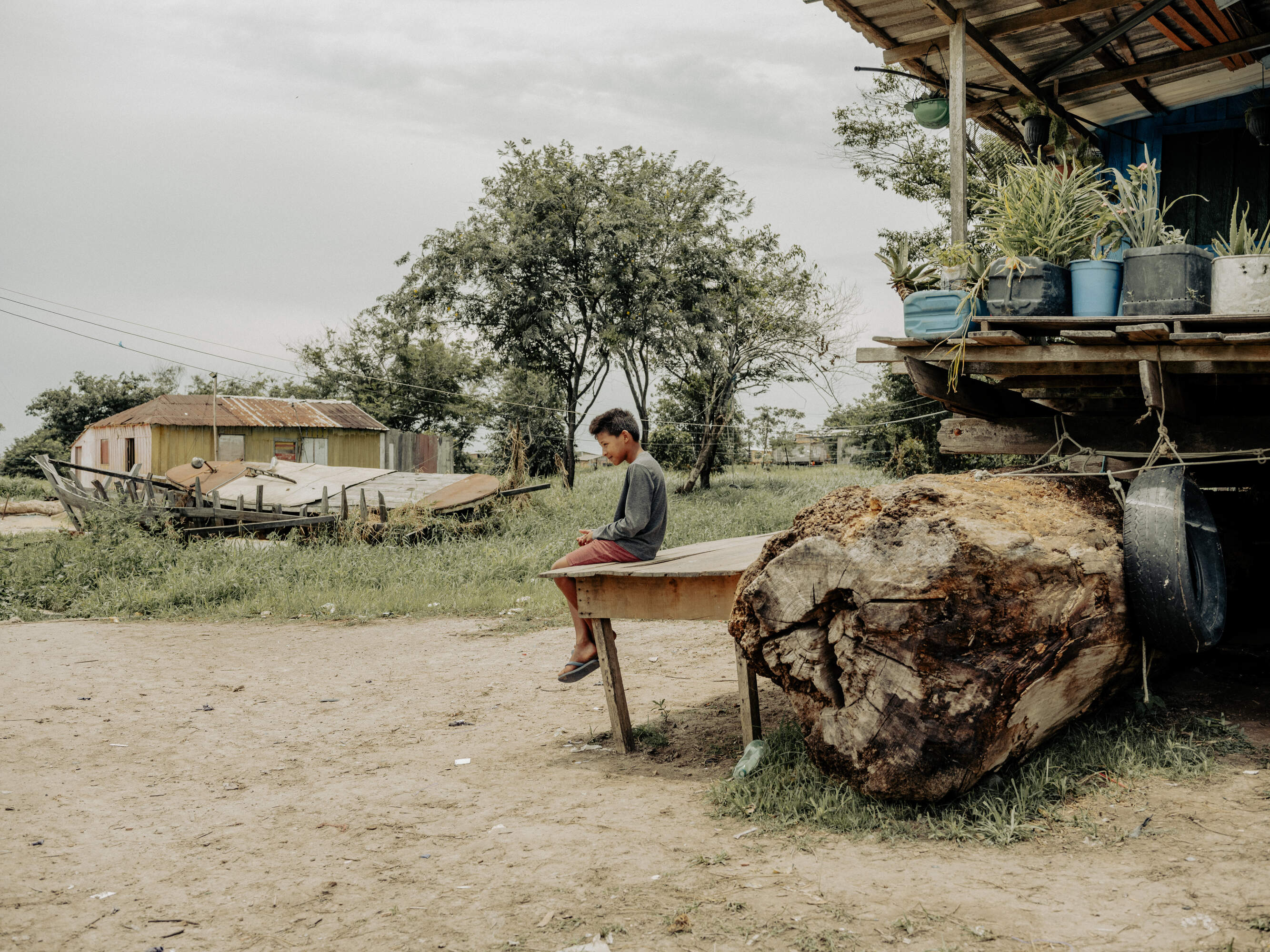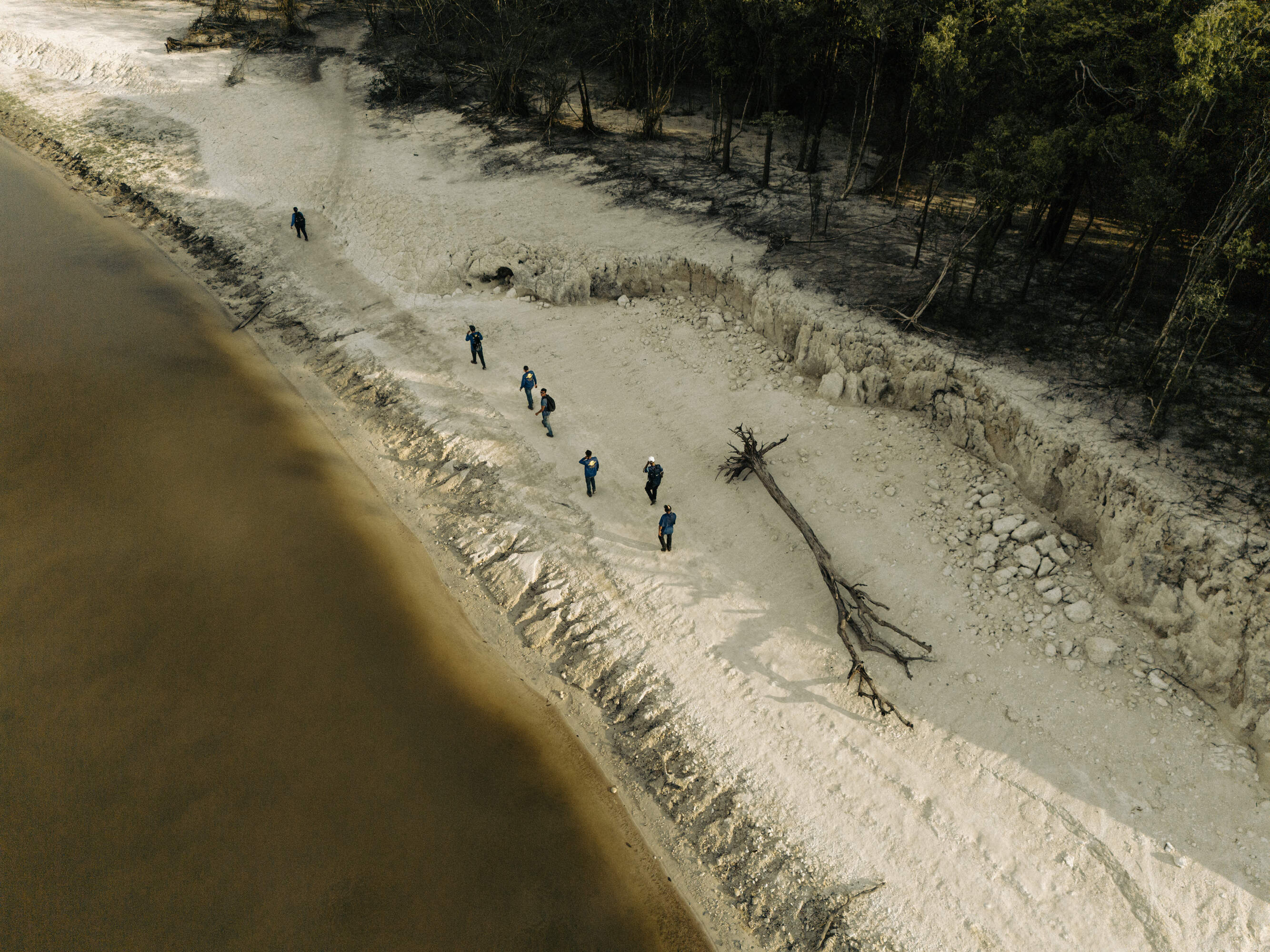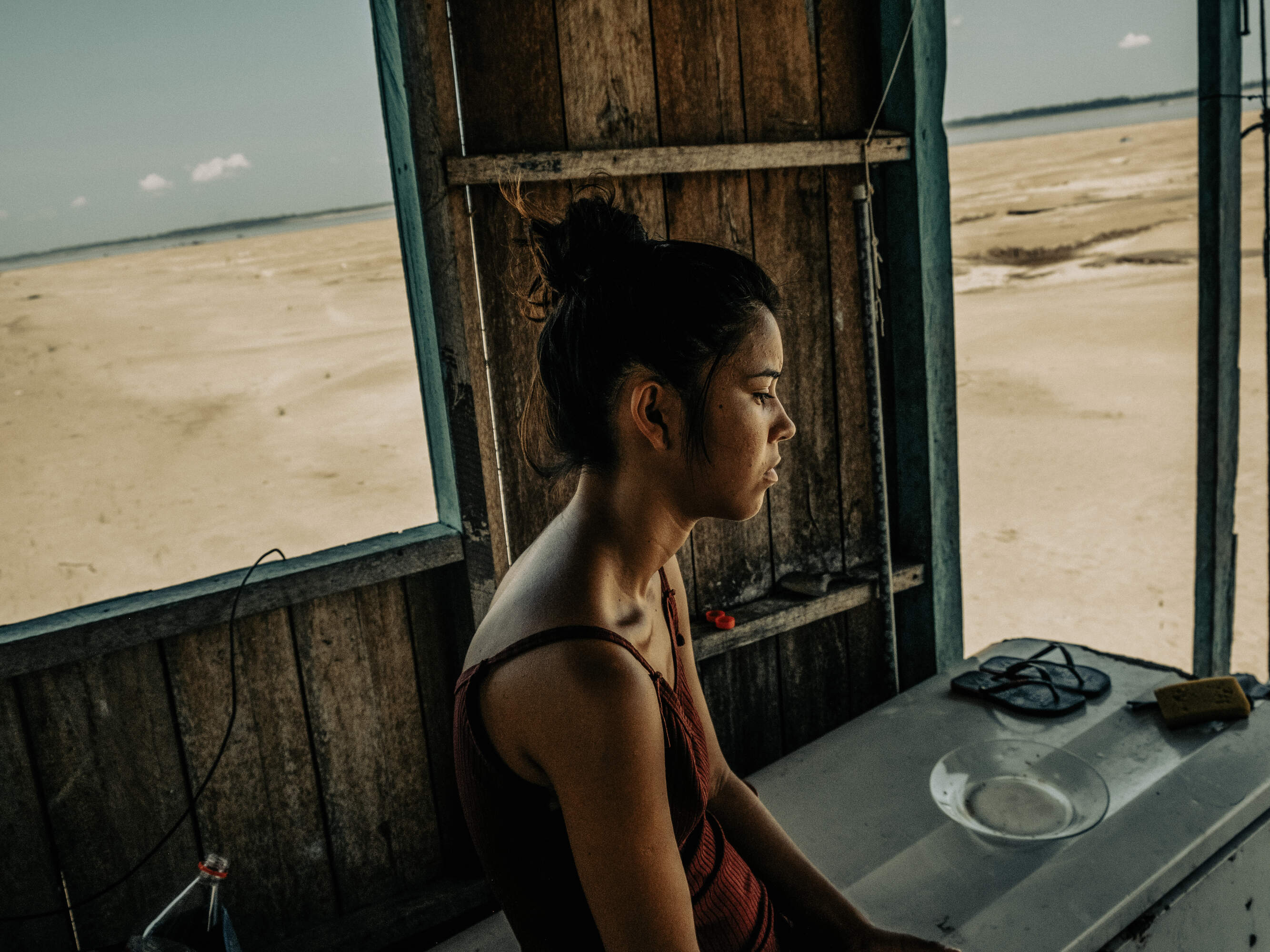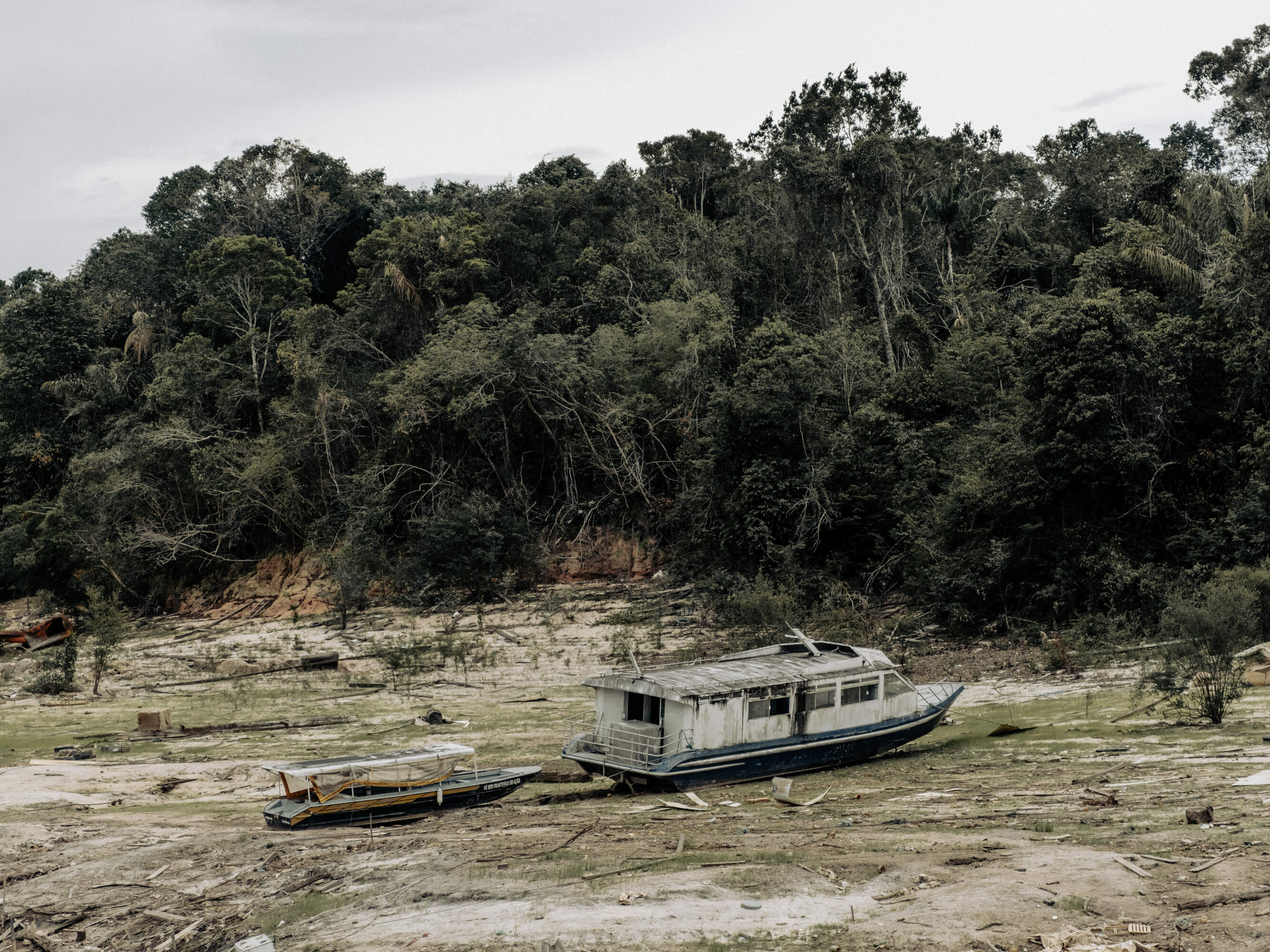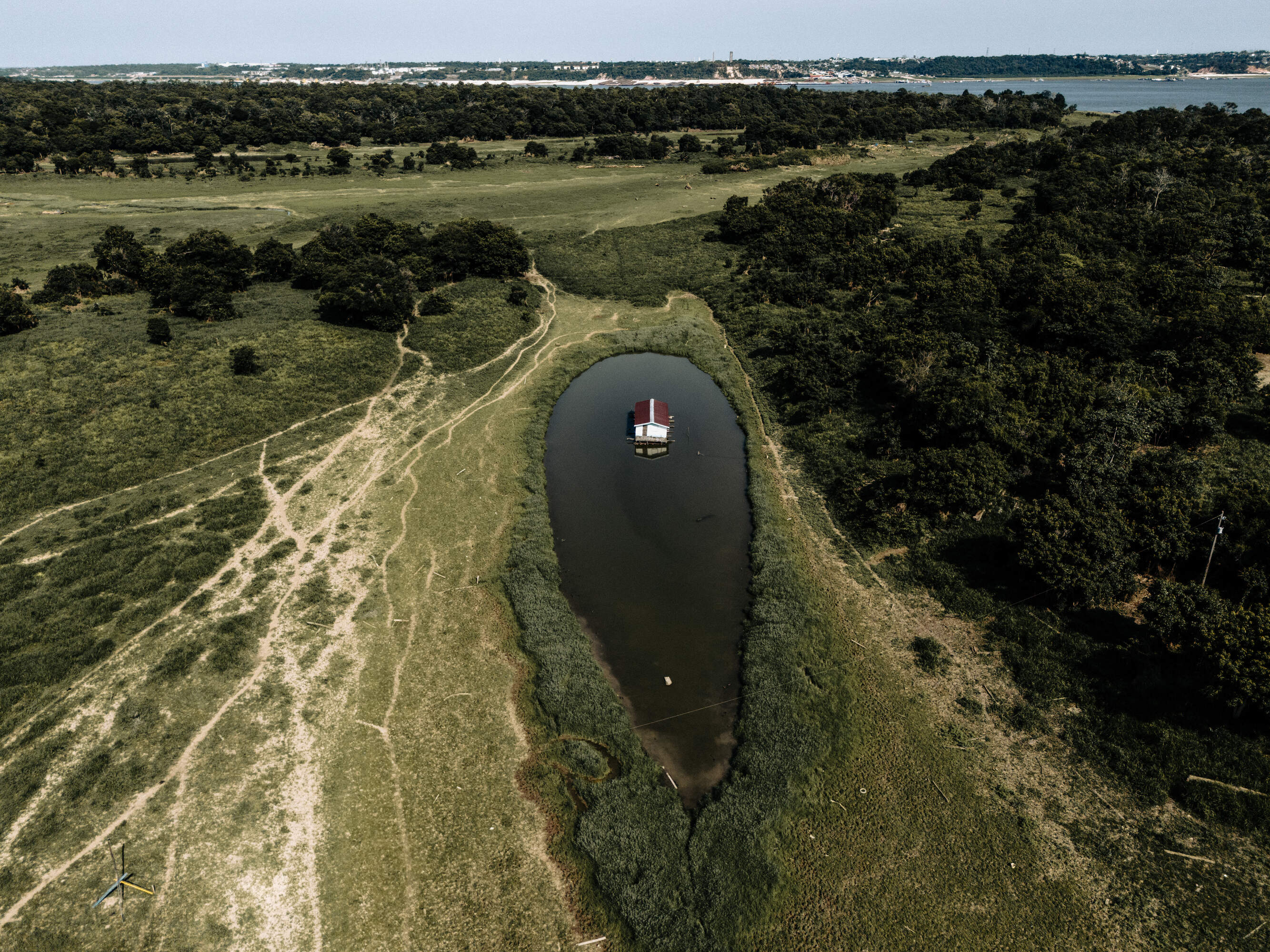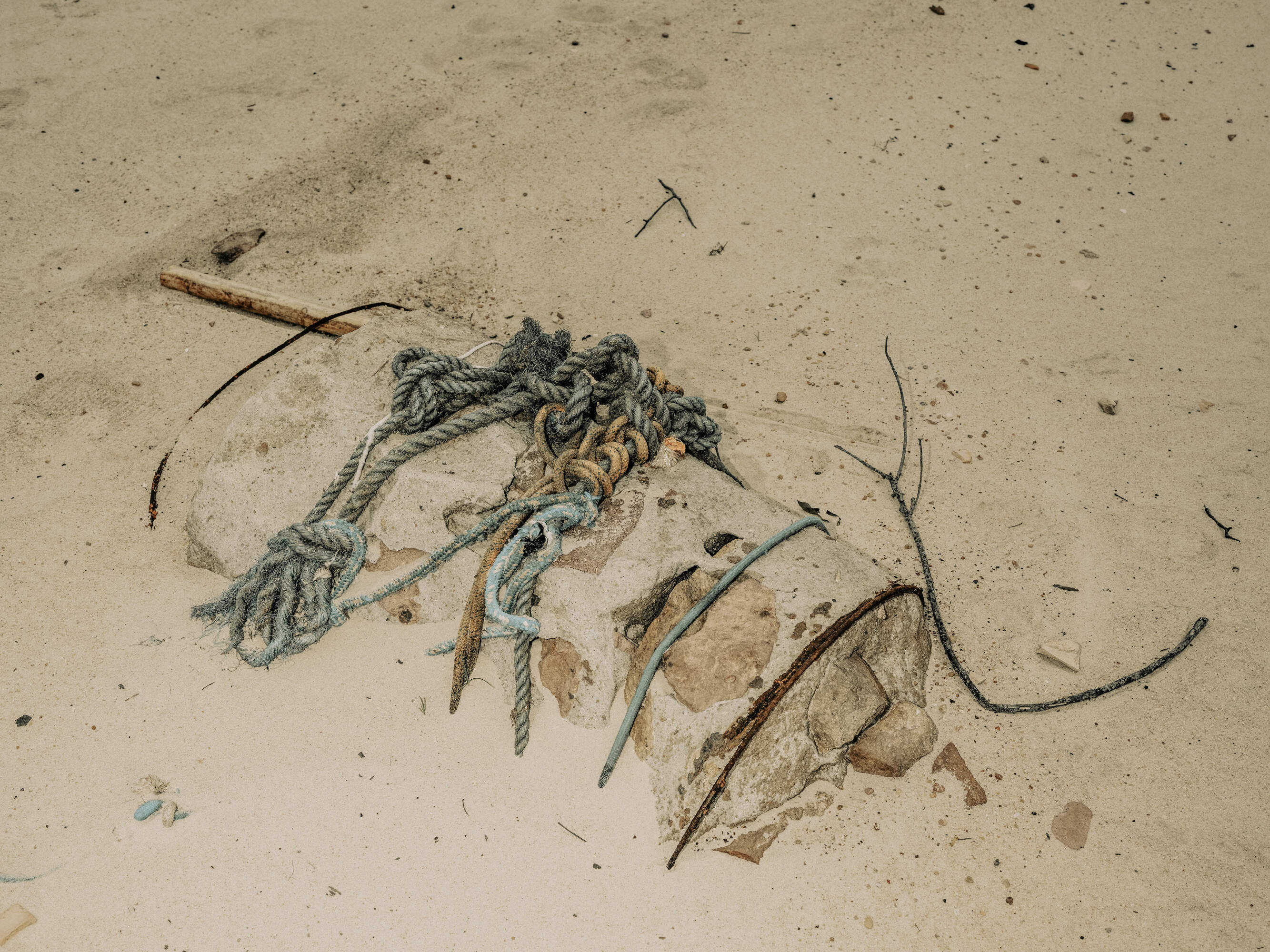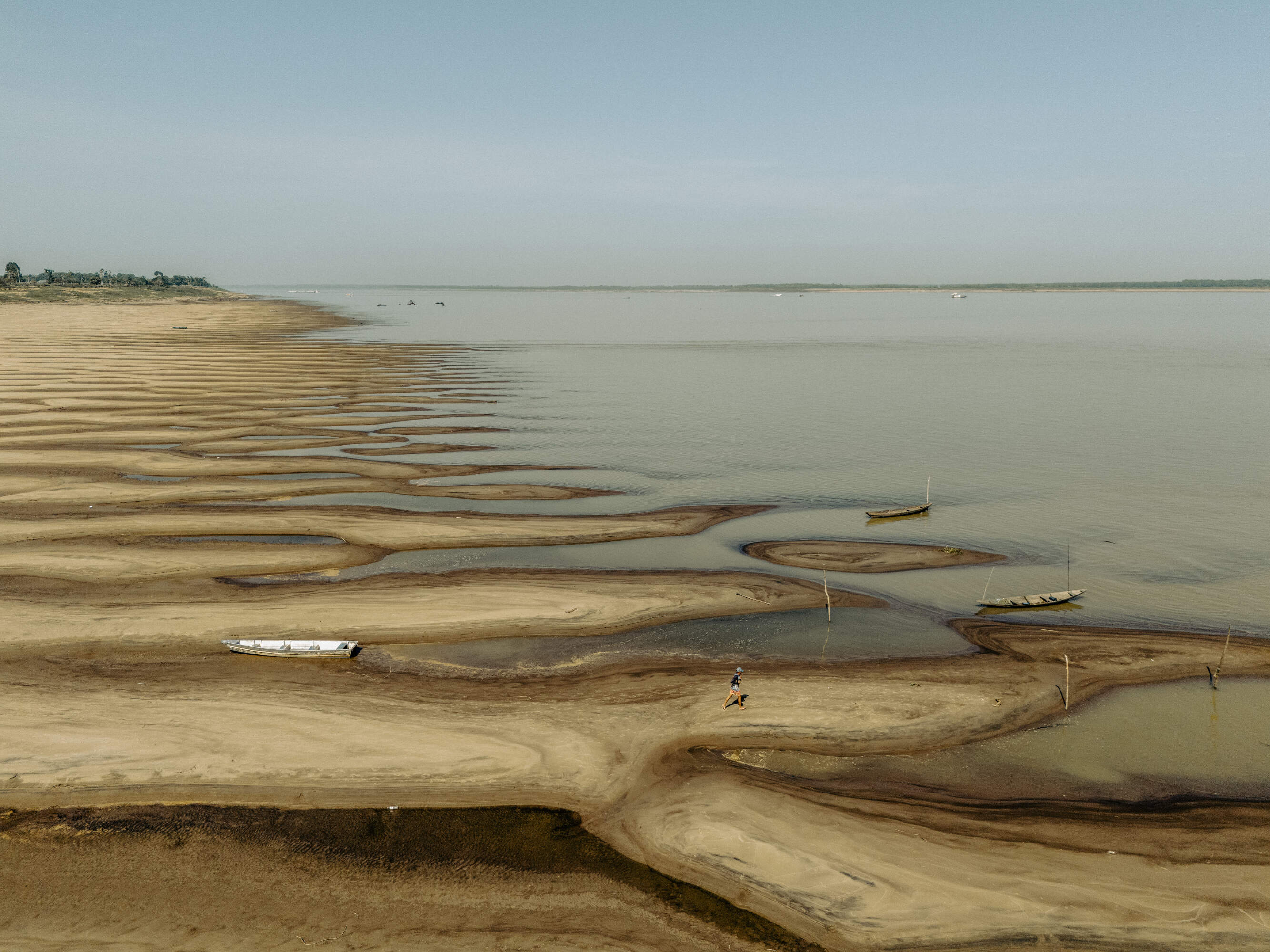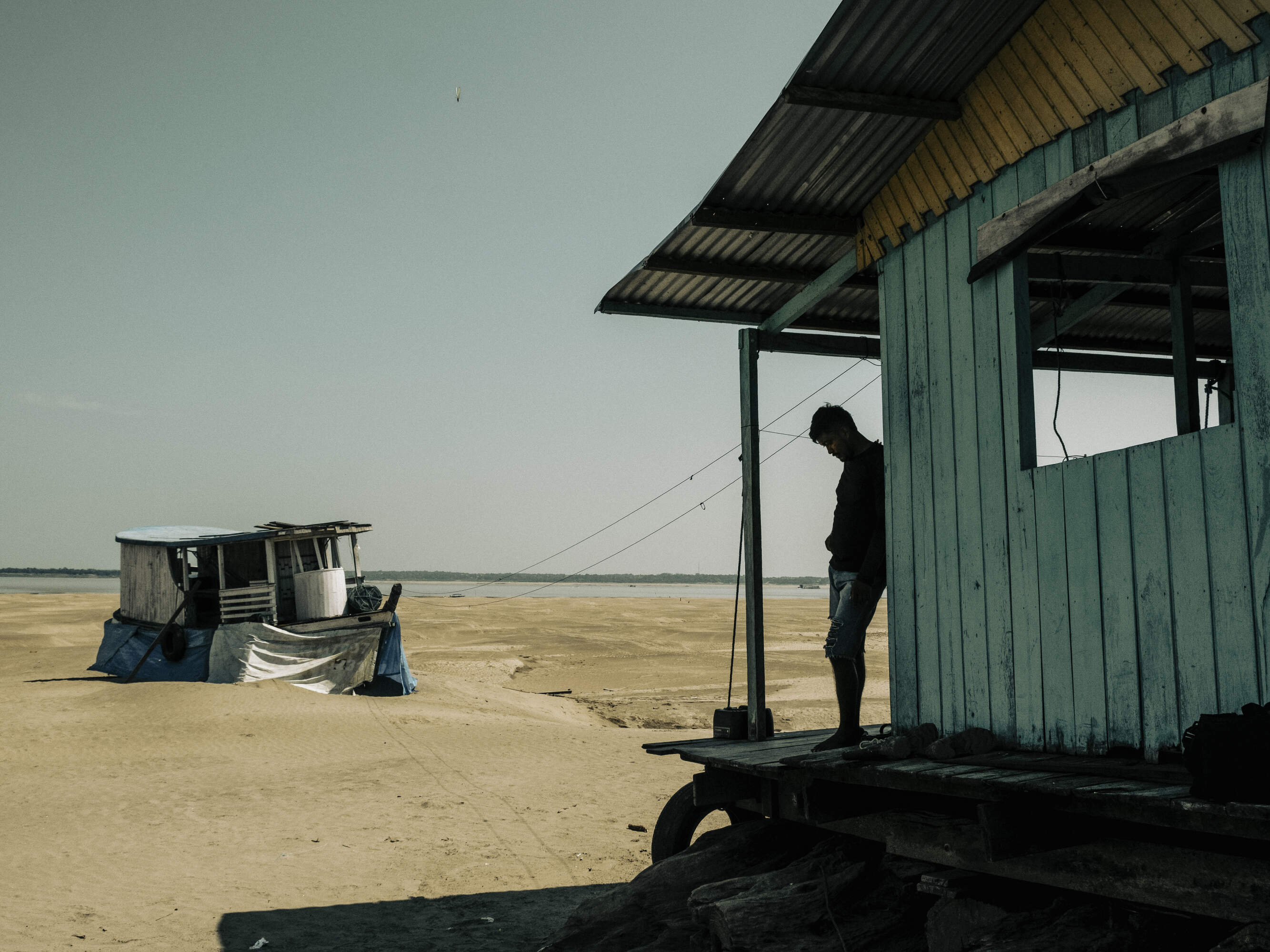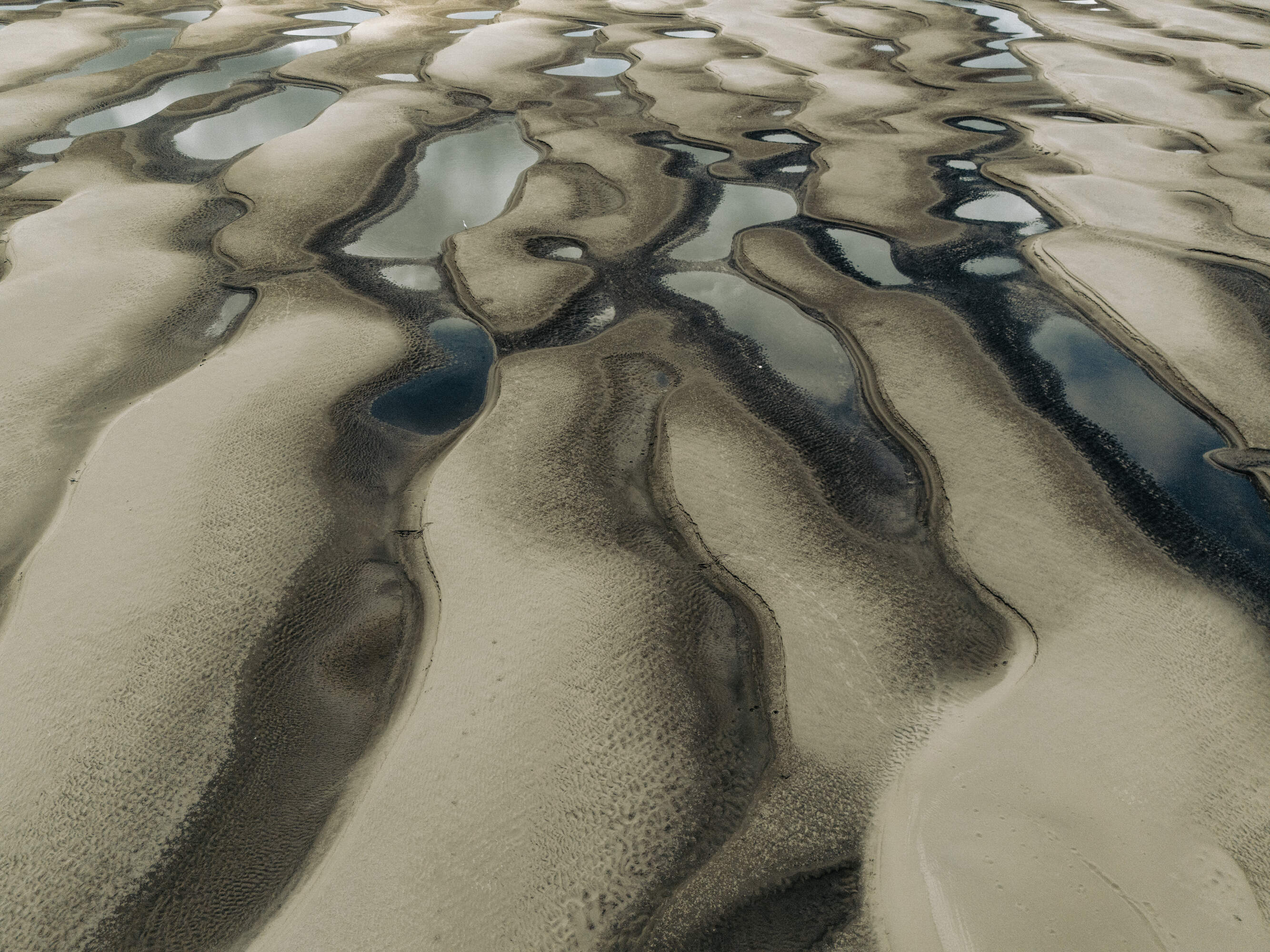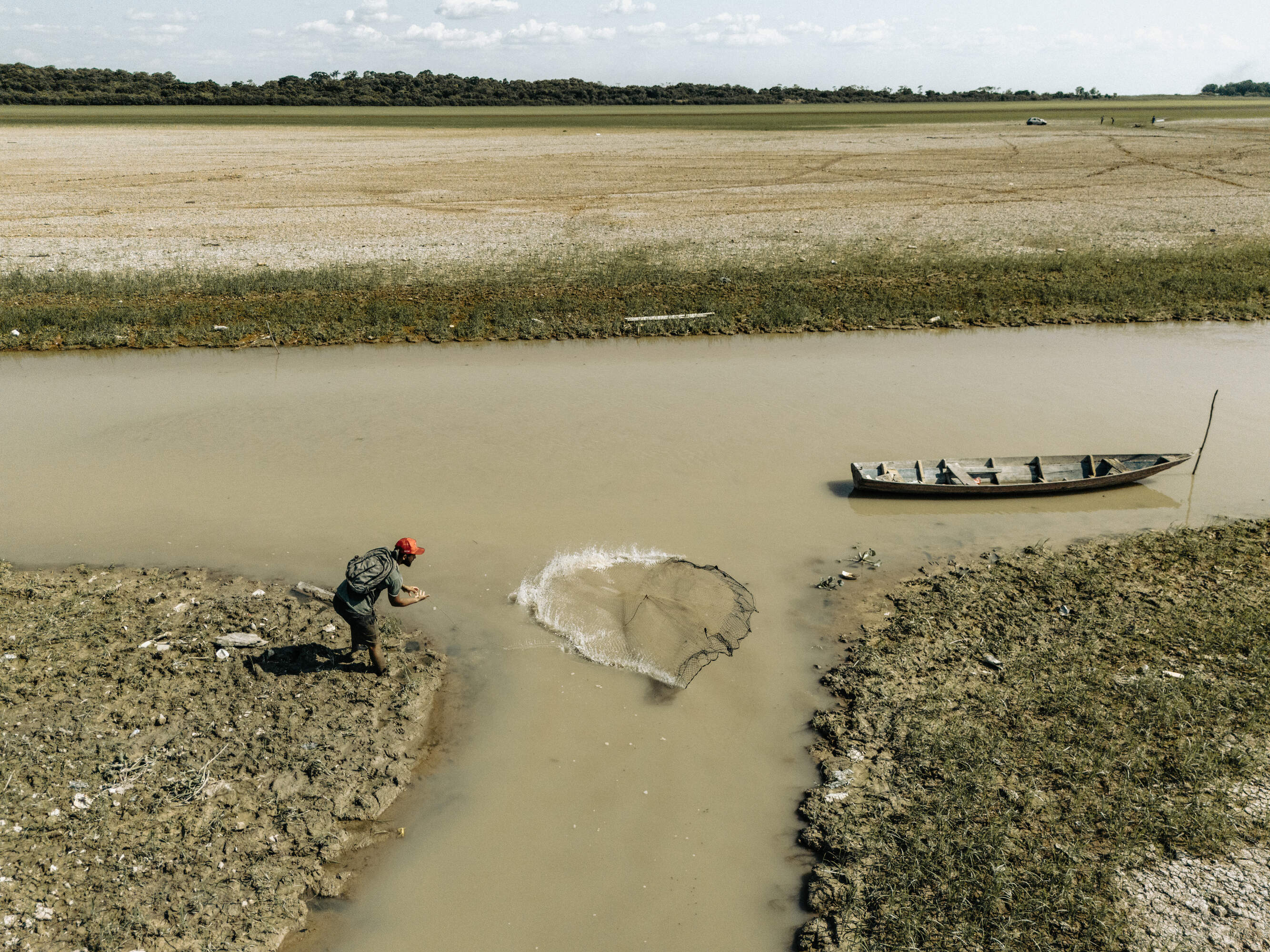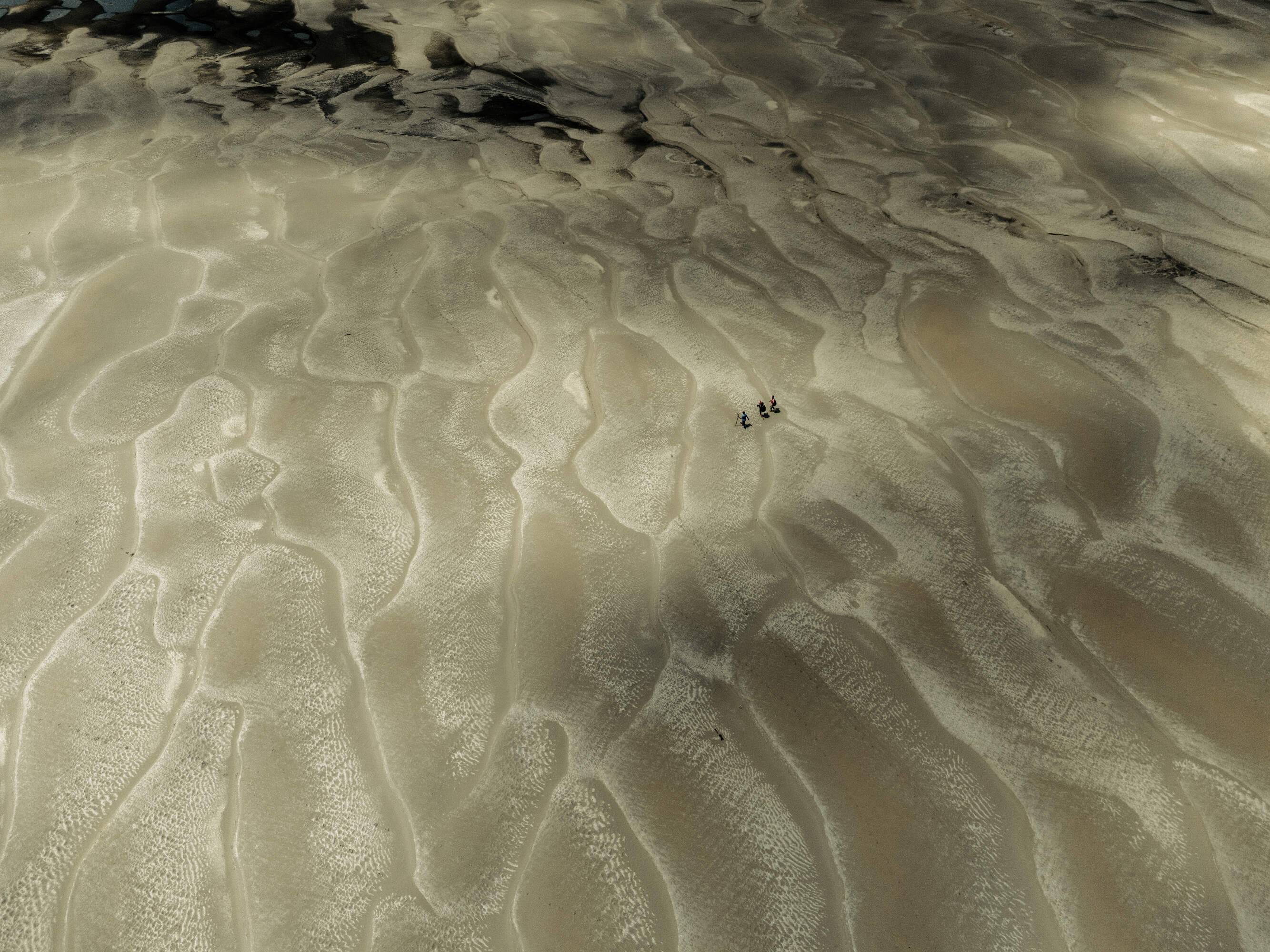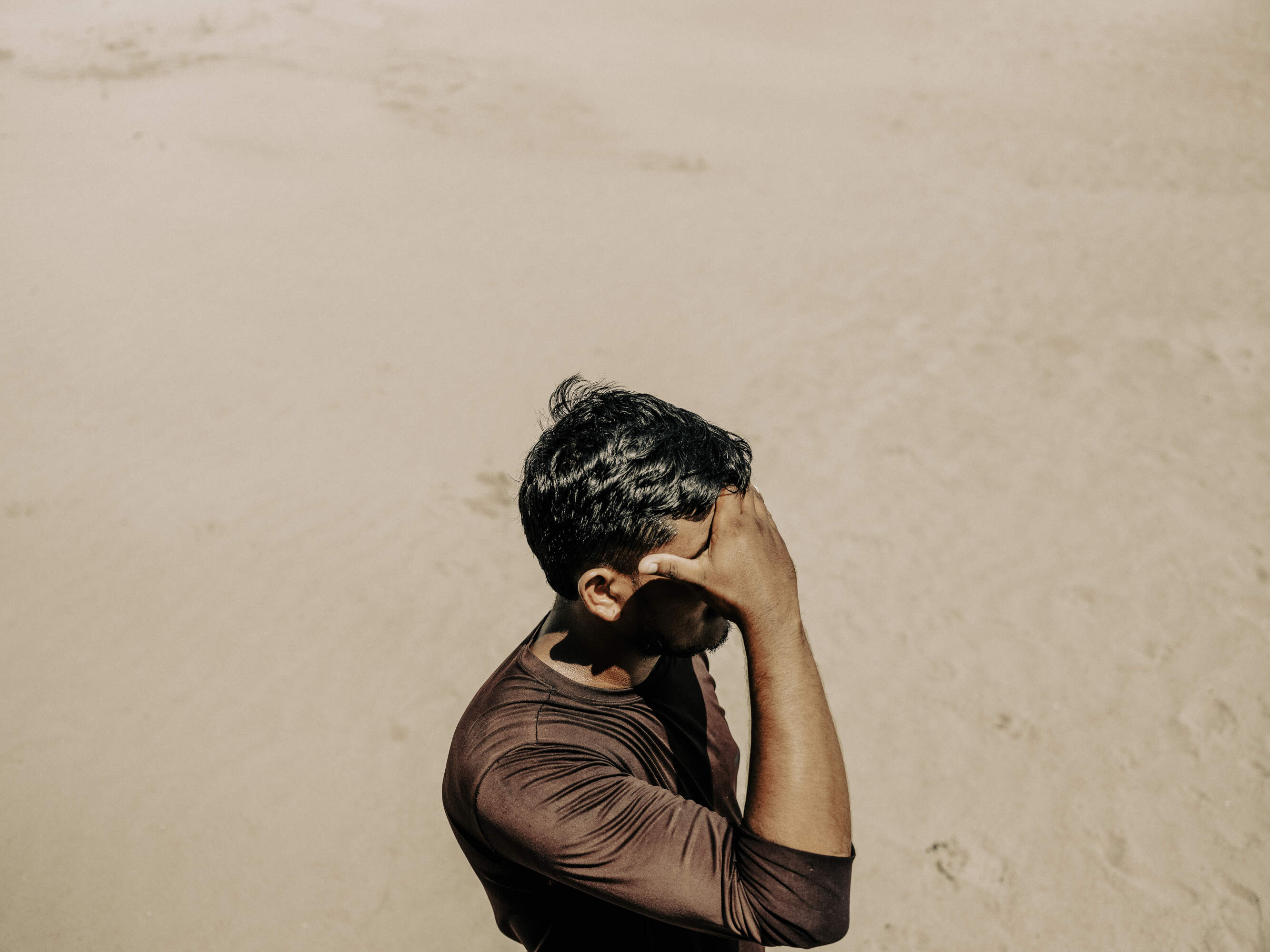A series of droughts in the Amazon basin, especially affecting the Amazon, Negro, and Solimoes rivers, are drastically lowering water levels and disrupting local transport and the lives of communities dependent on the rivers for their livelihood.
Some of the major tributaries of the Amazon River have recorded their lowest level since records began as a result of the severe droughts that has devastated the Amazon rainforest and other parts of the country. At the beginning of October 2024, the depth of the Rio Negro, which joins the Amazon River at the port of Manaus, was 12.66 meters compared to its usual level of around 21 meters. This is the lowest level ever recorded since records began 122 years ago.
The community of Sao Francisco de Marina has become almost completely isolated due to the receding water, caused by a series of droughts. The floating houses have run aground, and the channels once used to navigate by boat are now so shallow that it's no longer possible to travel along them by boat.
A resident of Manacapuru walks the dry river bed near the shore of the Río Solimoes.
Though water levels tend to naturally fluctuate between the rainy and dry seasons in the rivers that traverse the Amazon basin the 2024 dry season has been much more extreme than usual causing water levels to drop further and severe fires in Brazil's Pantanal further south. All major rivers in the Amazon basin are at critical levels, including the Madeira River, the longest tributary of the Amazon.
Two fishermen push their boat toward a section of the river where there is still water for navigation.
A boat on the remainder of water in the Puraquequara river, one of the tributaries of the Río Negro. Many formerly floating houses in local communities are now damaged and on dry land. Drought in the Amazon region is causing the
Raimundo Silva Do Carmo (69) was a boatman for many years. Now he is a trader working from a boat in Puraquequara but the falling water levels in the river are making navigation almost impossible.
Increasing droughts, associated with climate change, not only threaten biodiversity and river ecosystems but have also deprived local communities of the waters which their livelihoods depend on, making fishing and river navigation all but impossible in some places. Many of these communities have been cut off and their boats, which sometimes double up as their floating homes, have become stranded on large sandbanks. Due to the projected recurrence of droughts in the coming years, several communities are considering abandoning their homes and migrating to cities.
Cristiane Carvalho Cardoso, 42, used to work as a waitress on boats but is now unemployed due to the drought and the low water levels on local rivers. She lives with her three children and has no idea how much it will cost to repair her floating house. She's considering moving somewhere else.
Children swim in shallow wataer along the banks of the Rio Solimoes. Before recent droughts the water here would have been several metres deeper.
Boats float on small ponds formed by the retreating waters of the Solimoes River.
An aerial view of dry areas of the Solimoes Riverbed in the Manacapuru region.
A fisherman next to his boat on the dry riverbed of the Rio Negro. The water levels in the river have fallen to the lowest levels ever recorded leaving the whole fishing fleet stranded on the riverbank.
A man pulls a boat through the shallow centre of a river near the community of Sao Francisco de Marina which has been cut off due to low water levels in local rivers. The floating houses have run aground, and the channels local people used to navigate by boat are now so shallow that it has become almost impossible to navigate.
The remains of a boat that ran aground in 2023 due to low water levels in the Río Negro river.
Roots of a tree exposed in an area that is usually under water near Puraquequara.
A channel leading from the Puraquequara River to the Rio Negro with barely enough water for navigation.
Juarez de Souza Pena (43) is a fisherman and resident of the village of Pesquero in Manacapuru. The levels of the Solimoes River have dropped to historic lows creating a 2km band of dry land between the former shoreline and the water.
The Cordero Freitas family walking along the dry riverbed which now separates their community from the Amazon River. Before the drought their house was a few metres from the water. In places like Manacapuru, the water levels are now so low that the river bank has retreated some 2 kilometres.
Alexi (11) playing underneath the formerly floating house where he lives in the Cacau Pirera area on the opposite bank of the Rio Negro river to Manaus. His family's house is now on dry land due to the low levels of water in the river.
Workers from a shipyard walk along the dry riverbank of the Puracaquequara River. Previously they were able to access their work by boat but due to falling water levels they now need to cover part of their journey on foot in order to reach a part of the river which is still navigable.
Elidia Carolina (19) lives with her partner and their 2 year old daughter in a floating house. Due to the droughts and falling water levels the area around their home now resembles a desert. They have to walk almost 2 kilometres to reach the shore of the Río Solimoes.
Two stranded boats near the former shoreline of Taruma Lake.
A stranded houseboat in the Lago do Catalao community along the Rio Negro.
A concrete block lies on a sandbank in the riverbed of the Rio Negro. The water levels have falled significantly, turning large parts of local rivers into dry sand banks.
A resident of Manacapuru walks the dry river bed near the shore of the Río Solimoes.
Anderson lives with his family in Manacapuru village. Their boat is damaged and needs repairs worth around 6,000 reais. The family sells bananas but since the water levels in the river have fallen drastically they now need to carry them over a distance of 1.5 kilometres before the reach a part of the river which still has water flowing. Anderson lives with his father, partner and their daughter.
The bottom of the riverbed is visible on the Solimoes River near Manacapuru, Amazonas.
A fisherman searches for fish in one of the narrow channels of a tributary of the Rio Negro.
Fishermen from Manacapuru walk along the dry riverbed of the Solimoes River.
Anderson lives with his family in Manacapuru village. Their boat is damaged and needs repairs worth around 6,000 reais. The family sells bananas but since the water levels in the river have fallen drastically they now need to carry them over a distance of 1.5 kilometres before the reach a part of the river which still has water flowing. Anderson lives with his father, partner and their daughter.

